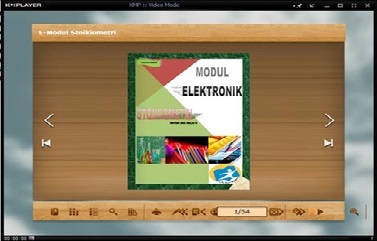
Implementation of E-Module Stoiciometry Based on Kvisoft Flipbook Maker for Increasing Understanding Study Learning Concepts of Class X Senior High School
Abstract
Keywords
Full Text:
PDFReferences
Ardiyana, P., Sri, S, S., & Nanik, W. (2018). Contribution Of Assisted Inquiry Model Of E-Module To Students Science Process Skill. Journal of Innovative Science Education, 7(1), 62-68.
Asep, J., & Abdul, H.(2011). Evaluasi Pembelajran. Yogyakarta: Multi pressindo.
Depdiknas. (2006). Pedoman Pmilihan Dan Menyusun Bhana Ajar. Direktorat Sekolah Menengah Pertama: Departeremen Pendidikan Nasional.
Dwi, S., Woro, S., & Saptorini. (2014). Efektifitas Model Inkuiri Berbasis Modul dala Meningkatkan Pemahaman Konsep dan Keterampilan Generik Sains. Jurnal Inovasi Pendidikan, 8(2), 1340-1350.
Hake, R, R. (1999). Analyzing Change/Gain Scores, AREA-D American Education Research Association’s Devision.D, Measurement and Reasearch Methodology, USA
Haris, Z., Latifah, H., & Muhamad, N. (2016). Pengembangan E-Module Kimia SMA Pada Materi Larutan Elektrolit dan Non Elektrolit, Universitas Syiah Kuala Aceh. Jurnal Ilmiah Pendidikan Kimia, 1(3), 9-16.
Hidayatullah, M, S., & Rakhmawati, L. (2016). Pengembangan Media Pembelajaran Berbasis Flipbook Maker Pada Mata Pelajaran Elektronika Dasar Di SMK N 1 Sampang. Jurnal Pendidikan Teknik Elektro, 5(1),83-88.
Lifter, M., & Tschiesner, A. (2013). The Internet of Things and the Future of Manufacturing, McKinsey & Company: -.
Miftahul, J., Jimmi, C., & Rasmiwetti, R. (2019). Development of Interactive Learning Media using Autoplay Media Studio 8 for Colloidal Chemistry Material. Journal of Educational Sciences, 3(1), 132-144.
Muhammad, N., Rizo B, P., & Riwayani, R. (2018). Design and Development of Physics Learning Media of Three Dimensional Animation Using Blender Applications on Atomic Core Material. Journal of Educational Sciences, 2(2), 23-32.
Pamungkas, A, R., Kuwadi., Siti I., & Siti, K. (2016). Penggunaan Multimedia Interaktif Untuk Meningkatkan Pemahaman Konsep Sifat-Sifat Bangun Ruang Pada Pembelaajran Matematikan. Jurnal Didaktika Dwija Indria, 4(6),
Rustaman, A., & Wulan, A, R. (2007). Strategi Pembelajaran Biologi. Bandung: Universitas Terbuka.
Suarsana, I, M., & Mahayukti, G, A. (2013). Pengembangan E-Modul Berorientasi Pemecahan Masalah Untuk Meningkatkan Keterampilan Berpikir Kritis Mahasiswa. Jurnal Pendidikan Indonesia, 2(2), 264-275.
Sugiyono. (2011). Statistik untuk Penelitian. Bandung: Alfabeta.
Tuyuzsuz, C. (2010). The effect of The Virtual Laboratory on Students Achievement and Attitude in Chemistry. International Online Journal Of Education Scienses, (2), 37-53.
UU No 20. (2003) Undang-Undang Nomor 20 Tahun 2003 Tentang Sistem Pendidikan Nasional.
Yenita, R., Putri, Y., Sehatta, S., Hadiyanta, A., & Andespa, S. (2017). Computer-Based Media for Learning Geometry at Mathematics Class of Secondary Schools. Journal of Educational Sciences, 1(1), 79-91.
DOI: http://dx.doi.org/10.31258/jes.4.2.p.261-272
Refbacks
- There are currently no refbacks.
Copyright (c) 2020 Hayati Nufus, Susilawati Susilawati, Roza Linda

This work is licensed under a Creative Commons Attribution 4.0 International License.
Publisher: FKIP Universitas Riau












